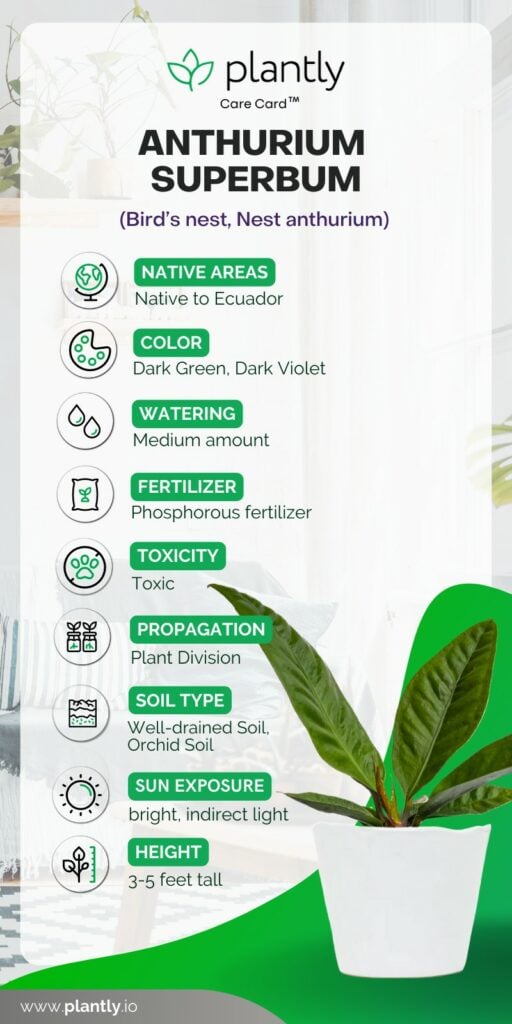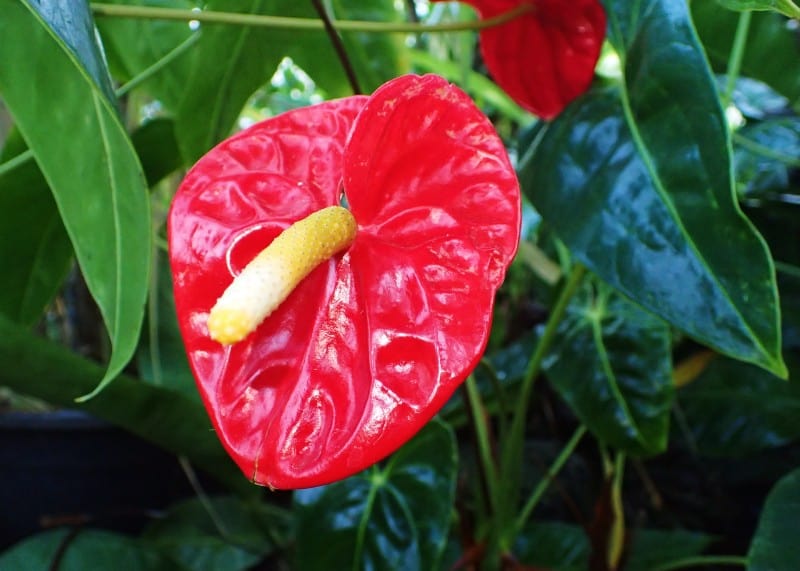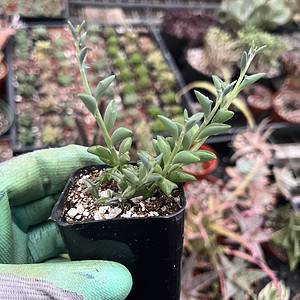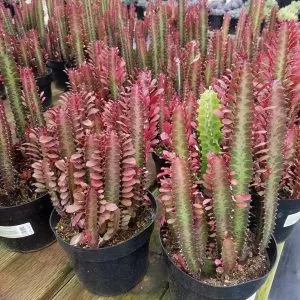No products in the cart.
Table of Contents
Did you know that Anthuriums is one of the tops of NASA’s list of air-purifying plants? And the Anthurium superbum is one of those!
The gigantic leaves and neon blossoms add elegance and strangeness to this tropical plant. It produces a magnetic force that will capture your guests’ attention when they enter your house. They also bloom in various hues and have just enough scent and visual appeal to attract pollinators.
The rigid, elliptical leaves with a dark purple back are grouped in an upright rosette configuration. This type is suitable for use as a container plant or a free-standing landscape plant in your tropical garden. Want to have this kind of plant? Read first how to take care of such beauty:
Anthurium Superbum Plant Care Basics

We’ll provide you the basic information about Anthurium superbum in table form. Get to know first its overview, and then we’ll move on to the next step!

Already knew about this beauty? Don’t just stop by getting to know each other! Learn also the care tips we’ve provided down below to flourish your Anthurium superbum.
Best potting mix

Use rich, moist soil (high organic matter) that drains well while growing Anthurium superbum. Above all, stay away from wet soil or anything that can cause it to retain water. Similarly, dry or quickly draining soil, such as sand, is not a good choice.
The Superbum does not grow on the ground in its natural habitat. It grows instead on tree branches and moss. To achieve the greatest results, you should give it something similar (or at least close). This can be accomplished by combining a few growing mediums, such as perlite and peat moss, with your potting mix.
You can also use orchid potting mix and combine 50 percent of it with potting soil to make the other half.
Watering Needs
Watering your Anthurium in a medium amount of water can suffice this plant. Enough for the plant to gain moisture. Some gardeners have different opinions regarding the plant’s water requirement; others claim that the plant is a drought-resisting plant or moderately tolerant to drought.
This outdoor plant should be watered but make sure that it is not pooling or waterlogged on the topsoil. Tap water is an advisable type of water for the houseplant. Before watering the plant once again, be sure to check the topsoil if it has moisture in it.
Overwatering can cause root rot, may it be done consistently or seldomly. Overwatering is the lead cause of bacteria and may as well be vulnerable to numerous root and plant diseases.
Watering the plant should not always be done during the winter months since it will take too long before the moisture dries up. It is also highly recommended to keep the soil dry during winter but not too dry to make the plant soggy.
Lighting Condition
Bright indirect light is ideal for Anthurium superbum’s growth. This resembles its original habitat in Ecuador’s subtropical and tropical woods, surrounded by enormous branches of tall trees. Anthuriums are light-sensitive, and exposing them to too much of it might result in scorched leaves and plant damage.
That’s why it’s crucial to choose the perfect spot in your house for them. Window blinds can help you control the quantity of light coming into the room and alter it to meet the needs of the plants.
Temperature is an important aspect of plant care, and it needs to be protected, especially during the winter months. If the Anthurium superbum is treated as an indoor plant, be sure that the plant can still get all needs in lighting source (for the plant to make photosynthesis).
Treating the said houseplant into an indoor plant can cause the Anthurium superbum to be protected from the volatile radiance of the sun.
Ideal temperature
The Anthurium superbum is known to be a tropical plant. Meaning that it could only best thrive and tolerate conditions where the temperature is 59-86 degrees Fahrenheit (15-30 degrees Celsius). These recommended temperatures are enough for the plant to survive and thrive well in the area where it was planted.
It is important to note that temperature fluctuations can give complications and stress to the Anthurium superbum. The Anthurium superbum is best to be placed outdoors during the summer and spring seasons.
On the other hand, the Anthurium superbum is best placed indoors during the winter and fall seasons.
Humidity

The humidity requirement of the Anthurium plant is very high. If the humidity isn’t high enough, the plant will suffer. The leaves margins will turn brown, and you’ll eventually have to say goodbye to your plant.
These tips may seem strange at first, but keeping your plant near the kitchen sink or in a well-lit bathroom will make it quite happy. If you want to put it somewhere else, as long as it’s humid enough, that’s great. You should also mist the plant every now and then.
You can use a pebble tray and place it beneath the pot. If the air is still too dry, consider investing in a humidifier. Trust me, it can benefit your plant the most. But if you don’t have a humidifier on hand, don’t worry. You can group plants together.
Plants that are grouped together also produce more humidity above and around them.
Necessary fertilizer
Anthuriums in this species can be quite sensitive to fertilization. Thus only a small amount is required. The rule for fertilizing a Bird’s Nest is to be consistent but not excessive. If you decide to feed it, consider that phosphorus is more critical to Superbum than nitrogen or potassium.
Therefore check for the letters N-P-K in the ingredient ratio when choosing a fertilizer for them. Phosphorus is the middle one, and it’s good for the plant’s overall growth and health, so go for the one with a greater P level.
Pro tip: When the growing season is through and the fall and winter months arrive, you can cease feeding until spring.
Propagation
Anthurium superbum is a prehistoric-looking bird’s nest variety Anthurium that works well in interiorscape and tropical environments. While there are many techniques to reproduce your Anthurium, plant division is the most common option.
Seeds can also be used to grow new plant babies; however, this is not advised.
Here are the simple steps: Remember, it’s best to propagate this during their growing season.
To replicate your plant, remove it from its container and untangle the roots. Depending on its size, you may end up with two plants or as many as a dozen. After you’ve separated the sources, all you have to do now is replant the divided plants in a proper container.
When repotting, make sure to use a new and well-drained pot with fresh soil.
Growth Zone
If you live in USDA zones 10 or 11, you can also grow them in the field outside. However, it will have a slightly distinct appearance when grown in the garden rather than in pots.
Potting
Medium-sized pots are recommended for the Superbum. The pot should have orchid soil to have good aeration for the plant. Avoid the Bird’s nest suffering from root bound and assure that the potting soil should be suitable for the plant.
Failure to choose the right potting soil for the plant will leave complications as it grows.
Anthurium Superbum Varieties and Similar Plants
There are approximately 1,000 species of anthurium plants. And I know you want to have some of them! That is why we’ve provided those beauties below. These are the examples of Anthurium species or varieties that have a bit of similarity to the Superbum:

The flowers are actually huge colorful leaves that have been shaped into flowers. They frequently have a lacquered appearance. The majority of flowers are long-lasting for at least several months.
The colorful component we consider the flower is actually a modified leaf called a bract or spathe; they contain a center spike, or spadix, which holds miniature flowers.
Anthurium Scherzerianum

Even before the Andraeanum, the Scherzerianum, or Pigtail Anthurium, became popular. It’s extremely well-known in Asia and Europe, but it’s a little more difficult to find in North America. In general, its care requirements are comparable to those of the tough Andraeanum.
Anthurium Amnicola (Tulip Anthuriums)
Tulip Anthuriums are more compact and smaller than Andraeanums. They are as hardy and easy to care for as their larger relatives and make great indoor specimens. They’re also resistant to aroid blight.
Anthurium Superbum Diseases & Pests
Anthurium superbum, like every plant, is vulnerable to pest assaults. Thrips, mealybugs, scale, and spider mites are common problems that attack the plant. Due to its thick leaves, the plant is not damaged by biting and chewing pests, although you should still monitor it.
Pests
Aphid anthurium plant pests come in various colors, including black, gray, white, red, green, and brown. They are swarming insects that pierce the plant’s flesh with their feeding mouthparts and extract sap.
Anthurium insects are frequently controlled organically using brief, rapid bursts of water that remove and suffocate the pests. Stubborn insects may be repelled with proper horticultural soap or oil sprays that do not harm the plant.
Spider mites are also the menace enemies of the Anthurium superbum.
Frequently Asked Questions
Yes. Misting this nest anthurium regularly can assist a lot, and you can even put a pebble tray under the plant’s pot. You may also combine it with other Anthuriums you have around the house.
Allow plenty of indirect sunshine, regular watering, high humidity, moist but not soggy soil, and weekly feedings of diluted phosphorus-rich fertilizer to enable your Anthurium to blossom even more.
Anthuriums can bloom all year if handled appropriately, with each bloom lasting two to three months. Your Anthurium could make up to six flowering seasons every year if you try and emulate the settings in their original natural environment.
It is good to look for it in your nearest local stores to keep your Anthurium in good shape. However, if you want to shop online, Plantly is the best option for that! It will benefit you the most with our fast online transactions. Message us now!
Whether you want to buy, sell or simply reach out to other plant enthusiasts, Plantly is the right place to be!
Only 1 left in stock Only 1 left in stock In stock In stock
$7.00
Sold By:
Sparkys Thriftway
Aglaonema – Chinese evergreen in 4” pot
Rated 5.00 out of 5 based on 1 customer rating00
Sold By:
Sparkys Thriftway
$10.00
Sold By:
Stripes and Variegations
Paper spine cactus or Pinecone Cactus
Sold By:
Stripes and Variegations
$4.99
Sold By:
Cacti and Exotica
String of Dolphins | 2″ pot
Only 5 available and it’s in 3 people’s basket Rated 4.98 out of 5 based on 59 customer ratings00
Sold By:
Cacti and Exotica
$59.99
Sold By:
Succulent Oasis
Mature Royal Red | Good Luck Plant
Only 11 available and it’s in 2 people’s basket Rated 4.84 out of 5 based on 352 customer ratings02
Sold By:
Succulent Oasis





